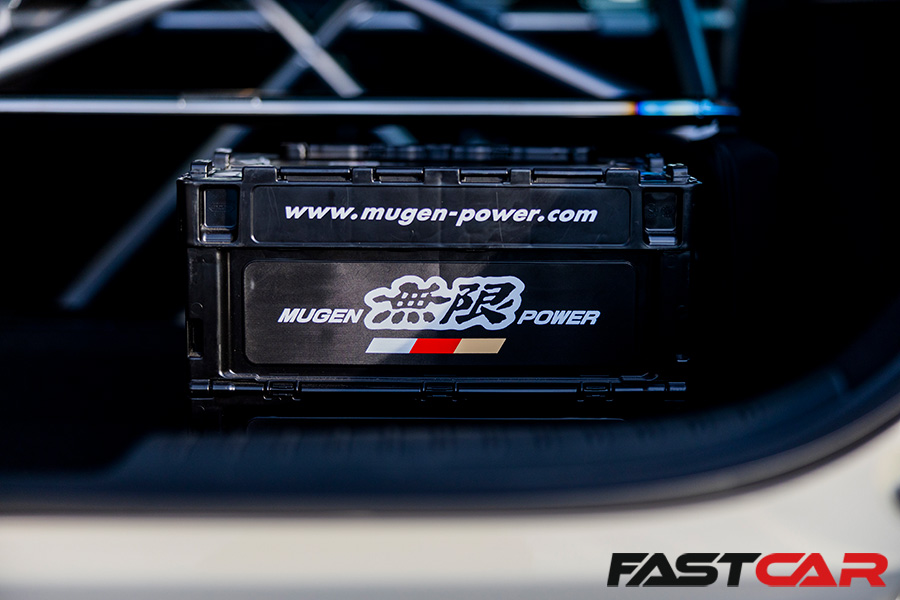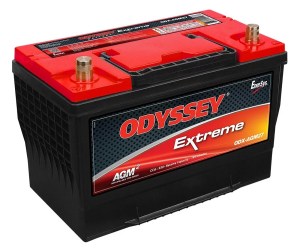Whether you need to change a flat car battery, looking for a power upgrade or something that doesn’t weigh so much, we’ve got you covered with everything you need to know.
The battery is an essential part of your car. Unfortunately, for car owners, none of them will last forever. The thing about car batteries is that they degrade in terms of performance and capacity as time goes on. This is like any other rechargeable battery, such as the one you’ll find in your phone or electric drill, you can only charge them up so many times before their ability to be ‘full’ for a long time deteriorates. As a result, you’ll need to factor in replacing one as time goes on. This is where some of the confusion comes in, on car batteries, there are a number of different numbers and letters that all mean different things. In this guide, we’ll help you understand that information, while also recommending some of the best options on the market.
We’ll kick things off with our top picks that you can buy today.
Best Car Battery in 2024
We’ve split our picks between the lead-acid (LSI), EFB, and AGM sectors, which you can learn more about at the bottom of this page. On top of that, you can find tech specifications for each battery listed underneath every contender. The specs we’ll be touching on in this article include Capacity, Cranking Amps (CA), Cold Cranking Amps (CCA), and Reserve Capacity (RC).
Capacity simply indicates how much energy a battery can store. CA is how we measure the maximum electrical current the battery can provide, whereas CCA refers to how good a battery is at turning over a car from cold. A higher CA or CCA rating equals a more powerful battery. Bigger isn’t always better though, as you need a battery with a rating that matches your car’s requirements – if you go too big, you’ll probably find that it doesn’t fit the stock mounting location. Remember that when browsing different variants of the batteries listed below. RC, meanwhile, reflects a battery’s capacity to keep electronic features within the car running even after the alternator fails.
Again, we’ve gone into greater detail about battery technology further down in this article, so feel free to head there first if you want to brush up on your knowledge.
At a glance:
- Best Lead-Acid batteries
- Best Overall: Optima RedTop – buy from $249.99
- Best Value: Bosch S4 – buy from £65.99
- Best EFBs
- Best Overall: Exide Start-Stop EFB – buy from £144.99
- Best Value: Varta Blue Dynamic – buy from £65.98
- Best AGM batteries
- Best Overall: Odyssey ODX/ODP – buy from $254.99
- Best Value: DieHard Platinum – buy from $139.99
Best Lead-Acid Batteries
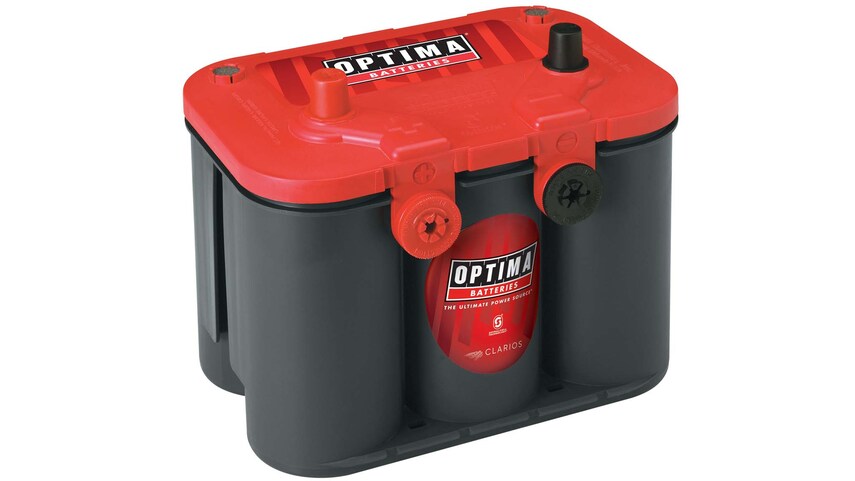
Optima RedTop – Best Overall
This is a great replacement for your standard OEM battery, with ‘SpiralCell’ technology which helps reduce vibration within the battery. That in turn reduces the chance of failure or acid spillage under high stress. What’s more Optima claims that the RedTop has a ‘very low’ self discharge rate, meaning you should be able to leave it alone for quite a lengthy period of time without the battery running flat.
Tech Specs:
- Capacity: 44-50 Ah
- Cranking Amps range: 910-1000 A
- Cold Cranking Amps range: 730-815 A
- Reserve Capacity: 90-100 minutes
Buy an Optima RedTop car battery at Walmart from $249.99.
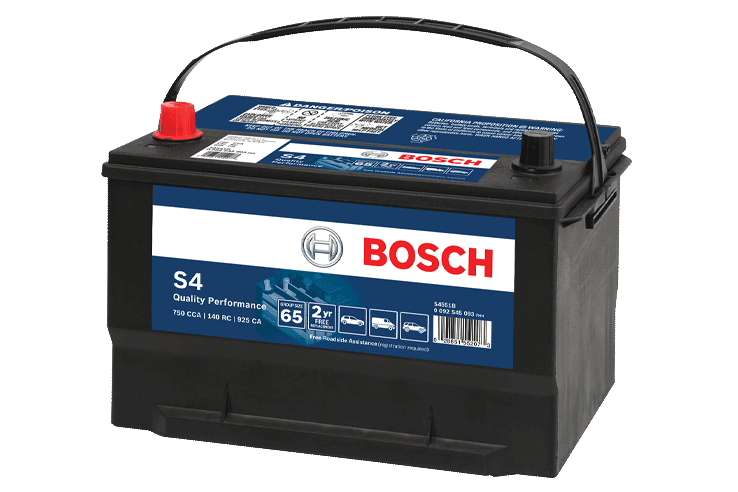
Bosch S4 – Best Value
You can’t go wrong with Bosch. From humble windshield wipers to complex EV powertrains, the engineering wizards at Bosch regularly master every industry they put their minds to. As such, if you’re looking for a regular lead-acid car battery, you’ll be in safe hands with the Bosch S4.
It makes use of full frame grid technology, with robust connections and resilient pocket separators. Plus, if you do have a mishap, Bosch has designed the top of the casing with acid spillage minimization in mind. To sweeten the deal, the Bosch S4 also comes with a 2-year warranty.
Tech Specs:
- Capacity: 40-95 Ah
- Cranking Amps range: Undeclared
- Cold Cranking Amps range: 330-950 A
- Reserve Capacity: up to 140 minutes
Buy a Bosch S4 battery at EuroCarParts from £65.99!
Best EFBs
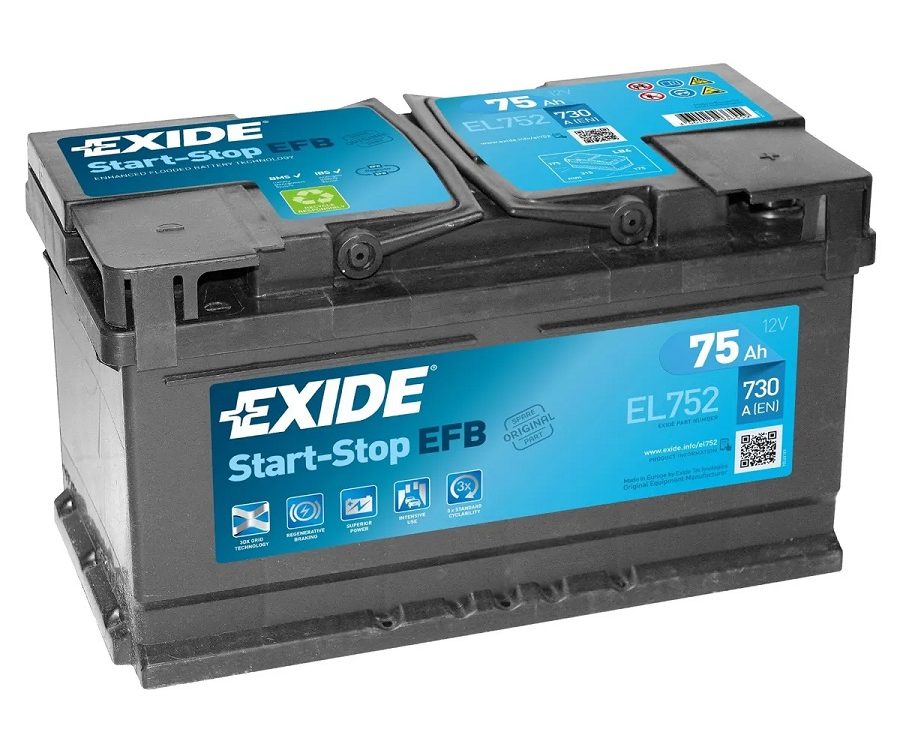
Exide Start-Stop EFB – Best Overall
The Exide Start-Stop EFB is suitable for cars with or without start-stop functionality. In fact, you’ll get an even longer lifespan out of it if your car doesn’t have start-stop. However, if you do have a high-tech ride, this battery is also optimized for use in regenerative braking systems. A powerful multi-tasker, then.
Tech Specs:
- Capacity: 55-105 Ah
- Cranking Amps range: Undeclared
- Cold Cranking Amps range: 520-950 A
- Reserve Capacity: Undeclared
Buy an Exide Start-Stop EFB at EuroCarParts from £144.99!
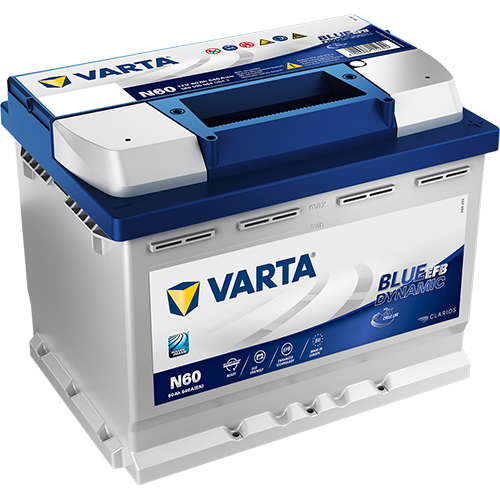
Varta Blue Dynamic – Best Value
Here’s a secret for you – Varta batteries are built in the same factories as Bosch batteries. As a result, this Varta Blue Dynamic EFB also makes use of PowerFrame architecture, which helps to speed up recharges and provide resistance against corrosion.
Being an EFB rather than an LSI, Varta claims that its Blue Dynamic range offers twice the cycle life of its standard batteries.
Tech Specs:
- Capacity: 40-95 Ah
- Cranking Amps range: Undeclared
- Cold Cranking Amps range: 330-830 A
- Reserve Capacity: Undeclared
Buy the Varta Blue Dynamic EFB on Amazon from £65.98!
Best AGM Batteries
Odyssey ODX/ODP – Best Overall
The ODX range is Odyssey’s most powerful family of AGM batteries. Designed for use in the most extreme climates and applications, ODXs can tackle anything from big diesel crew-cabs in sub-zero forests, to the beefiest of muscle cars in the driest of deserts. Though, if that’s a bit overkill for your intended usage, then make sure to give the more down-to-earth ODP AGM range a look instead.
Tech Specs:
- Capacity: 49-215 Ah
- Cranking Amps range: 800-1750 A
- Cold Cranking Amps range: 600-1300 A
- Reserve Capacity: 89-450 minutes
Buy Odyssey batteries at Advance Auto Parts from $254.99.
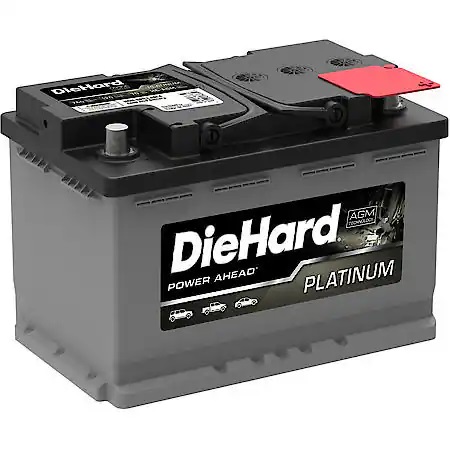
DieHard Platinum AGM – Best Value
DieHard offer 11 different types of battery across multiple industries, with this Platinum AGM being the top dog of the automotive range. It is made from 94% recycled materials and has a 3-year warranty.
Tech Specs:
- Capacity: up to 100 Ah
- Cranking Amps range: 425-1000 A
- Cold Cranking Amps range: 180-950 A
- Reserve Capacity: 57-160 minutes
Shop for these batteries at Advance Auto Parts from $139.99!
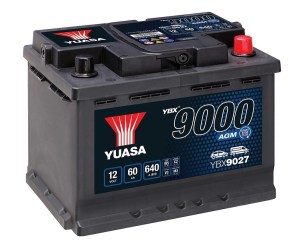
Yuasa YBX900
Yuasa claims that it’s the world’s leading battery manufacturer. Quite a statement, but one that certainly has some credence to it, given Yuasa’s close relations with many automotive OEMs. As such, it makes sense that if you want a hard-hitting AGM battery, you should go to one of the top manufacturers. The Yuasa YBX9000 is the offering that we’re posing to you in this case, which should supposedly last 360,000 engine starts.
Tech Specs:
- Capacity: 55-105 Ah
- Cranking Amps range: Undeclared
- Cold Cranking Amps range: 520-950 A
- Reserve Capacity: Undeclared
Buy a Yuasa YBX9000 battery on Amazon from £139.99!
Battery Fitment
Before you rush to buy any of the products listed above, do bear in mind that your car will have certain fitment and power requirements. So, make sure you buy a variant which matches your car’s needs!
Anyway, it’s probably about time we dig into the nitty gritty tech details that underpin battery technology. So, keep reading to get a full picture of what you need for your car.
Car Battery FAQs
What causes car batteries to fail?
While a car battery will last you for many years, it’s easy to get caught out, especially in winter when the cold weather significantly reduces their ability to deliver the current needed to start your car. In fact, the humble car battery is also the cause of most of the breakdowns around the world. This is because, let’s face it, most of the time we don’t replace them until they go wrong.
And all that’s just for standard cars, what if your modified creation happens to be running loads of extra power-sapping accessories? How can you upgrade to a battery more suitable for your requirements? Sadly, it’s not always a case of slapping your numberplate into a website and getting the cheapest one. Unfortunately, not all auto parts suppliers get it right, especially when it comes to modified cars.
You know what they say though, knowledge is power. So if your car battery is struggling and our guide to charging your car battery hasn’t solved the problem, it may be time for a replacement or even an upgrade.
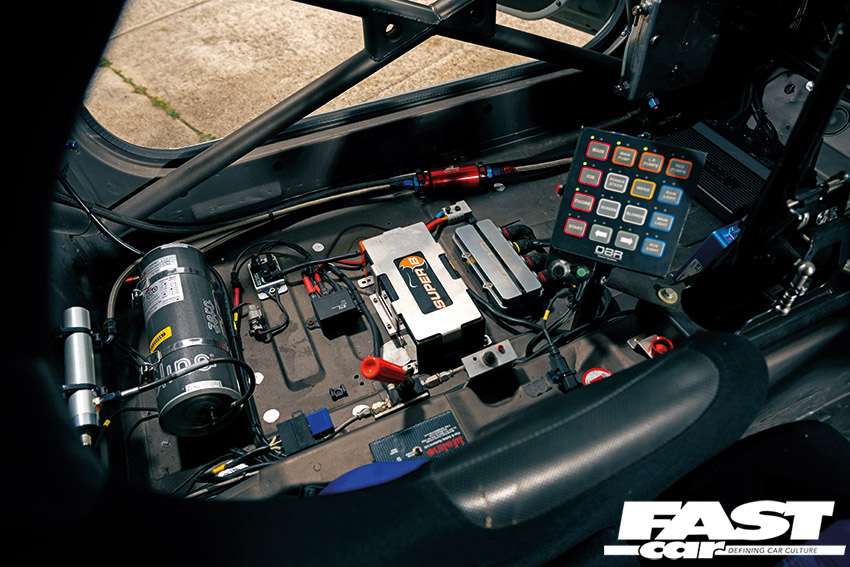
What does a car battery do?
Your regular 12volt car battery has two distinct jobs. The first is the most obvious, powering all the electrical systems such as the ignition, multiple vehicle ecus, lights, your car radio and the like. This of course includes any other electrical gadgets and gismos you may have ticked on the options list, or retro fitted over the life of the car. Basically speaking, anything that runs on electricity (and anything else you may have plugged in) will take the direct current (DC) it needs from the car battery. Cars also operate a closed system, and by that we mean that when the battery is in good condition no external power source is needed for charging.
Closed System Charging
When your car is running, the battery is kept charged up by the alternator, which is basically a type of generator that’s runs off a belt connected to the engine. As the belt spins the alternator pully, the rotational energy is converted into electricity and fed back to the battery. A standard alternator will crank out enough power to run the whole system on a standard car, meaning that the battery is doing very little work when the engine is running, it’s basically a big capacitor holding all that electricity and offering a stable pool of power for the car to draw from. When the engine isn’t running (and the battery is not being topped up) the electrical systems will simply deplete the battery pool, the reason why your battery will go flat if you play the radio for long enough or leave the lights on overnight.
Alternators are perfectly designed for the job but they do have limitations – they can only supply so much juice. Standard petrol and diesel cars don’t use a whole load of power for the most part, so a closed system with an alternator is sufficient to keep the battery charged for years at a time. But, when you start adding loads of accessories that require much more current for prolonged periods – say a massive audio system or active suspension that you can’t help constantly fiddling with – it stands to reason that you may be drawing more from the battery than it’s designed to supply. Here an uprated battery will essentially offer a deeper pool of power. In extreme cases multiple batteries and more powerful alternators may be required to make sure the closed system can handle the current draw.
Open Systems
Open systems are used when an alternator isn’t up to the job of charging, meaning that the battery (or batteries) must be charged externally. The most common example nowadays is the drive batteries on electric cars. A tiny little alternator isn’t going to supply enough juice to keep those massive battery packs topped up, right? But there’s also a couple of examples in the modified car community.
Many competition audio cars will be charged externally, or simply run off the mains via a 12V transformer. It’s also common for vehicles fitted with hydraulic suspension systems to have multiple batteries that don’t rely on an alternator for charging. In many cases, these are completely separate 24Volt setups that aren’t tied into any other vehicle systems.
Cranking
The second job your car battery performs is starting the engine. This is a completely different animal to simply supplying a stable power source for the electrical systems all the while the vehicle is running. To fire up the starter motor and get the engine to crank over, the battery needs to supply a huge amount of current for a very short time. If you try to turn over an engine by hand you’ll feel a lot of resistance, so it makes sense why it takes a lot of grunt to get that engine going.
What’s important here is that both jobs are reflected in the battery specs. This makes it far easier to pick yours when you know what to look for. Generally speaking, running the vehicle systems is all in the capacity and starting the engine comes down to the cranking power.

What do the car battery numbers mean?
When you look at all those figures on the label it can be confusing. Car batteries are a bit like tires in that respect – there’s a few important numbers and plenty more that won’t make a whole lot of difference to your life. From manufacturer part codes to group sizes, these also depend on where in the world you are. There’s all sorts of different standardized specifications for the US, Europe and Asia, making a breakdown of what every single digit futile here. That said, (aside from the 12V bit) here’s the other figures that you may find useful…
Car battery capacity (Ah)
Most people look for this number to work out the power but, strictly speaking, it’s not a definition of how powerful the battery is, it’s simply the measurement of the storage capacity. The higher the number, the bigger the capacity (or the electrical pool) your vehicle systems can draw from. Think of this as denoting how long the battery can deliver sufficient power without charging.
Ah means Ampere hours and indicates the amperage the battery can supply for an hour, or for how many hours it can supply 1 amp. Which, as you might expect, is all very technical and hinges on you knowing exactly what your car is drawing out. Here in the real-world though it does help to give an indication of what power you have stashed away in a brand-new battery.
Let’s say an average car stereo draws 10 amps and you have an 80Ah battery, this means it will play for 8 hours before the battery is depleted. If, however, you have a big install with external amps, subwoofers and all the trimmings, this will draw significantly more – so you’ll want to keep the engine running when you’re spanking the tunes out, otherwise you’ll drain the battery quickly.
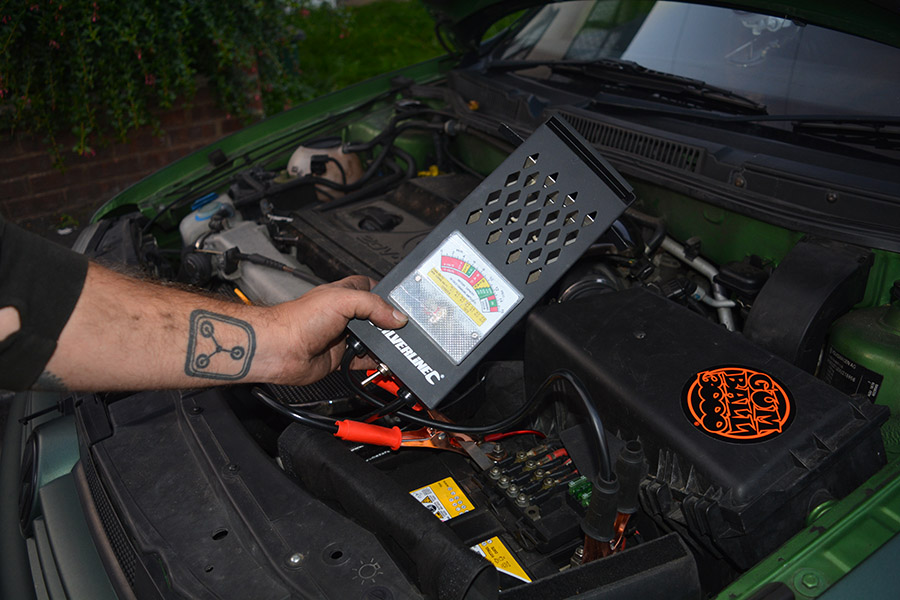
How long before your battery dies when leaving a car unused?
As for how long before your battery dies when leaving a car unused? Well, most cars draw around 50 milliamps when switched off, simply to keep stuff like your clock, ecu settings and radio memory ticking over. This is just a twentieth of an amp, so the same 80Ah battery will last for 1600 hours with that draw, which is about 2 months. This is why, even with an older battery that may have degraded in capacity over time, you should be able to leave a car for weeks without the battery going flat.
Anyway, that’s the technical side but what you really need to know is that, when looking for a car battery you’ll need to make sure this Ah number is at least the same as standard item, and a bit more if you can, especially if you’re running additional equipment.
Starting Power (Cranking Power)
Nowadays most car batteries have a single CCA (Cold Cranking Amps) figure, and this denotes the Amps the battery can kick out for 30 seconds at -20-degC. In some cases, the CCA figure may be labelled as EN (for Europe) or SAE (in the USA and Asia). If you have both and they happen to be different, don’t worry because they just refer to the way that batteries are tested for each kind of rating. Just make sure you at least match them to the new one.
This rating is often overlooked but is crucial because different cars are more demanding than others, a big diesel lump requires more grunt to get going than a small petrol engine for example.
Fitting the correct sized battery
Put simply, your new battery has to be up to the job, and this is why fitting a 600CCA battery in a car that comes with an 800CCA battery as standard won’t give you the reliable starting power you need.
It’s also worth remembering that over time battery performance is reduced, so fitting a lower rated battery means it will struggle more and more as time passes. But equally, although there are advantages to fitting a replacement with a higher CCA rating, you don’t need a massive 1200CCA battery to start a standard car that has a 600CCA battery as standard. It probably won’t fit anyway.
Finally, there are a few other starting power measurement figures that pop up now and again, so it’s important not to confuse these with the Cold Cranking Amps, chiefly because they will always be higher numbers. These are the Cranking Amps (CA), or the battery performance measured at 0-degC. And the High Cranking Amps (HCA) which is measured at 27-degC. A 1000HCA battery typically only has a CCA rating of 600. So, don’t be fooled by any inflated figures.
Reserve Capacity (RC)
Battery Reserve Capacity denotes the amount of time in minutes that a battery can run a 25A load before the voltage drops below 10.5 volts. This is important because it gives you an indication of how long you can run your car if the alternator or any other part of the charging system fails. Most batteries have an RC rating of well over an hour.

Car Battery Dimensions & Construction
Car Battery Sizes
You may also find a figure for the battery ‘group size’, these were created by the Battery Council International (BCI) to denote the exact physical dimensions of each battery. For example, a 36R battery will be 263mm long, 183 wide and 206 high, and a 93 battery 354x175x175… oh and there’s about another 70 different specifications, before you even get to the capacities and terminals and everything else.
In our case of course, it’s just overcomplicating something very simple. All you need to know is that the battery you choose must physically fit in the space provided by the vehicle. So, either keep the group number the same, or break out the measuring tape to make sure. Just be aware that just because a battery fits in the gap, doesn’t always mean it’s the right one for your car.
The other thing to be wary of here is how your battery is secured into the vehicle. Some are clamped across the top with a bar, others have a hump at the bottom that’s clamped down with a metal plate. You need to make sure you have the correct type because you don’t want your battery sliding about when you drive.
Car Battery Terminals
Again, these will be denoted by various manufacturer and standardized codes around the world. But the short story is that the lead terminals on your battery need to fit the types of fixings on your vehicle. They also need to be in the right position on the left or the right of the battery to ensure that the standard battery cables reach the correct pole. Wiring in a battery back-to-front will seriously ruin your day… and usually all the vehicle electrics.
There are various types of terminals, most commonly the Standard Post batteries you’ll find on most vehicles made in Europe and the US. Japanese Post which are like standard posts only smaller. And then there’s bolt-through terminals that you… er, put a bolt through to secure. It’s important to make sure your new battery has the right ones.
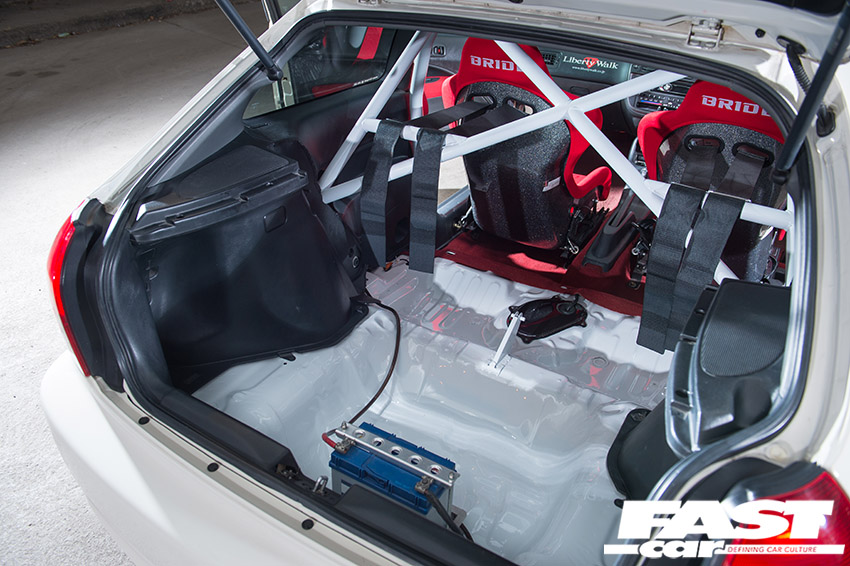
Car Battery Construction
Finally, we’re on to the actual type of unit you should look for because, put simply, not all batteries are equal. Obviously, the prices will always come into play here, but be careful because it’s easy to think you’re getting a bargain, when in fact you may just be buying a battery that doesn’t work too well for your type of vehicle. This is especially important for the most up-to-date cars which now have more onboard electronics than ever before. And it goes double for those that use start stop systems.
There’s quite a few types of car battery but (discounting the Nickel Metal Hydride and the Lithium-ion batteries you’ll commonly find in EVs and hybrids) the most common types of car battery and car battery upgrades you’ll come across are Lead Acid, Silver Calcium, EFB and AGM batteries.
Lead Acid (SLI)
Traditional lead acid, wet cell car batteries are extremely common. Even though they’re the most basic type you’ll still find them on most of the vehicles around the world. Likely because these are extremely cheap to produce.
Lead acid batteries typically last for 3-5 years and can be referred to as SLI batteries, which stands for the most important vehicle systems they power – starting, lighting and ignition. They work by using a series of positive and negative metal plates (usually over 6 cells) which are submerged in an electrolyte, or more specifically solution of sulphuric acid and water used to carry the charge.
Despite essentially doing the same job (in exactly the same way) there are two main configurations. Flooded-cell batteries have removable caps used for topping up the electrolyte inside. Sealed units don’t need topping up, this is why they’re often referred to as maintenance-free batteries.
Silver Calcium
Not quite as common, but still worth a mention, Silver Calcium batteries are another type of lead acid battery. The only real difference here is that they’re put together using a calcium-lead-silver alloy to make some of the internal components. Although they’re more expensive, these are designed to offer increased resistance to corrosion and the effects of high temperatures. This results in improved battery life and high cranking power over a long period. Unfortunately, silver calcium batteries need a very high voltage over a specific range to recharge effectively. This means that they should only be fitted to vehicles that have them as standard. They’re good, but not an upgrade in the traditional sense.
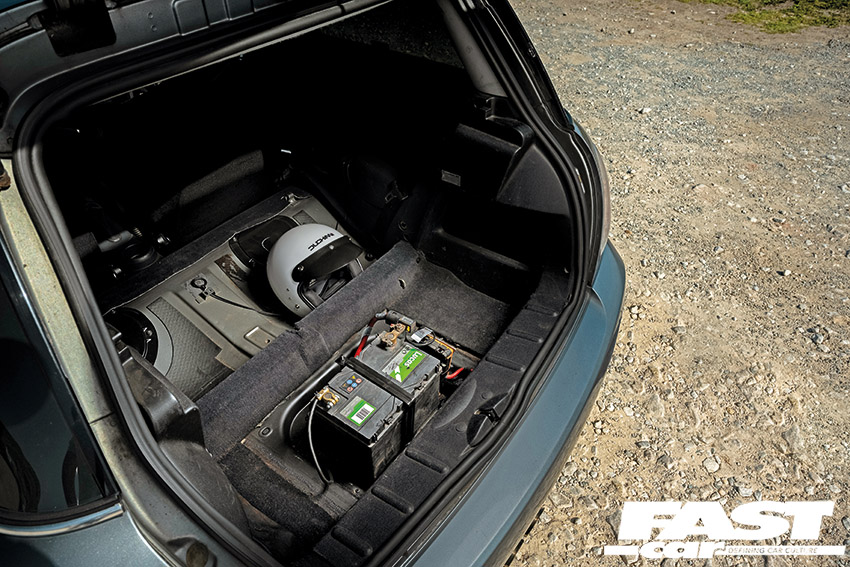
EFB
Enhanced flooded batteries are basically led acid batteries that are optimized for higher performance and increased stability. The idea is to drastically increase the number of charging cycles the battery can withstand without degrading, and improve the deep discharge performance for a longer effective life over plenty of high cranking in short bursts. Typically, one of these will last you for 5-8 years.
You’ll commonly find EFB batteries in cars with stop start, and they can be used as an upgrade over conventional SLI batteries, although most upgrades tend to involve upping the game to AGM.
AGM, Gel Cell & VRLA Car battery
AGM stands for absorbent glass mat and it refers to the internal structure of these sealed units. In an AGM battery the electrolyte is bound and suspended in glass fiber making the unit not only leak-proof but helping to offer much higher output. In fact, AGM batteries can offer up to five times faster charging and a significantly higher performance than EFB batteries. This makes them even more ideal for vehicles running lots of accessories or stop start systems. This type of battery can also last up to three times longer than EFB and, even though they’re expensive, they’re becoming more and more common for OEM applications on modern cars.
AGM batteries are also an example of a VRLA (Valve Regulated Lead Acid) configuration. Although they’re technically sealed units, they incorporate a one-way relief valve as a safety measure to prevent excessive build-up. Gel cell batteries are similar in design and another example of VRLA, but they’re not quite as common in the car market because AGM batteries tend to offer better performance at a lower cost.
As for upgrades, it’s nearly always possible to upgrade to AGM in a car that comes with an SLI or EFB battery as standard. But you can’t do it the other way around. If you already have AGM, you’ll need another when the time comes for a replacement.

